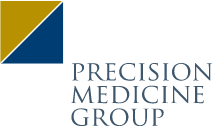Data-driven PR campaigns, not puff pieces, reach clients’ goals

First published in PRWeek.
For companies to precisely attract the customers and investors they need, their integrated communications plan should be built on a foundation of data-driven PR.
Social media and traditional advertising are as important as ever to reach wide audiences by distilling messages into brand imagery and concise, actionable points. Data-driven PR has the power to fully and clearly craft that message, and then amplify and contextualize it in deeply substantive and measurable ways.
With content development, PR professionals tell the client’s story through media channels where target audiences already learn and engage. PR speaks to customers before, during and after sales and marketing campaigns. Whether clients choose an agency that offers all these services under one roof or multiple agencies with a record of coordinated campaigns, Data-driven integrated campaigns can help PR teams lead the following three indispensable actions:
Establish the foundational story for all communications
Communications are about telling the bedrock story of the campaign. The campaign is only as potent, compelling and influential as the story. McCann’s Truth Well Told motto resonates in PR, where we are experts in identifying the truth and developing stories that deliver it in clear, specific detail. Stories tell how the company solves a problem or fulfills a need, uses knowledge and empathy and attracts leaders who exemplify a company’s transformative, future-facing roles.
As the basis for consistent, positive press coverage, those stories can improve brand reputation. Beyond PR content, stories can drive everything from advertising and social media to in-person conversations with customers and potential investors.
Deliver rich, difference-making depth and detail
Social media hits the messaging high points, but that’s just the introduction. PR delivers the fully fledged, detail-rich conversation that’s beyond the capacity of social media to convey. In earned media outlets, PR helps deliver what audiences want: substantive, educational content they can use — not “puff pieces” — but a richly developed story with well-placed content. Audiences gain value, while the client makes enduring impressions and builds reputation.
Voice is a key consideration. PR campaigns can deliver messages through a company’s customers or key opinion leaders in the field. For my healthcare clients, physicians write articles for their peers, post social media content, and participate in strategic podcasts and educational sessions, all of which support the stories clients are telling through direct campaigns.
Gain insider access to targeted media outlets
Some components of an integrated communications plan have a broad reach, but data-driven PR targets specific audiences. We’re skilled in profiling the desired audiences, identifying their preferred media sources, and selecting which outlets can best reach them. We might use traditional print outlets, as well as social media publishing, sponsored content, video channels, podcasts and other mediums. PR teams deeply understand these outlets and have the industry relationships to get our clients inside.
Once content runs, PR professionals track and contextualize key metrics and for the client, going from views and shares to brand tone. It’s a matter of depth and quality over quantity, with analysis not just of views but also of engagement by precisely the key decision-makers clients need to reach. Clients are moved by that evidence, plus it’s gratifying for the PR team, whose most valuable capacity, ultimately, is to move the needle for our clients.










